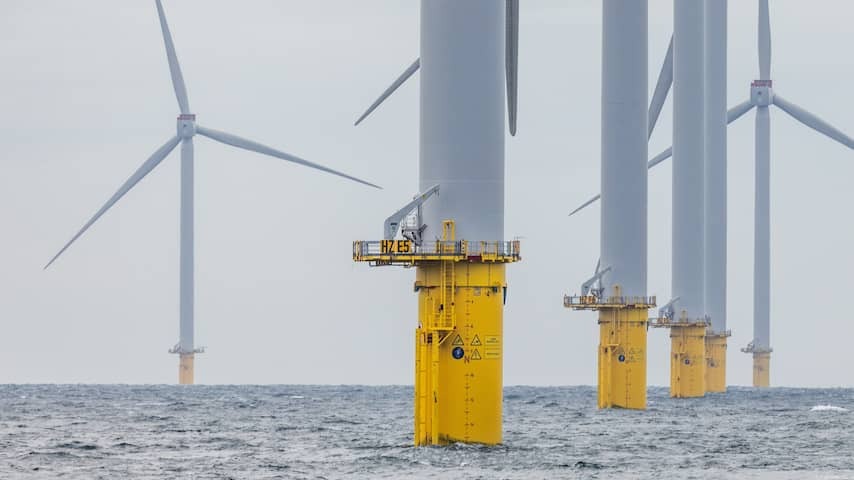
The outgoing cabinet wants to build wind farms in the North Sea at a slower pace. The planning will remain the same until 2032, but after that the pace will slow down. The industrial demand for electricity will also grow less quickly than expected, says outgoing Climate Minister Sophie Hermans.
In a letter to the House of Representatives, Hermans writes that the market for wind energy is “very challenging” due to rising construction costs and uncertainty about energy demand. “Against this background, realism is required when setting goals and planning the roll-out of wind energy at sea.”
Currently, almost 5 gigawatts of wind turbines are installed in the North Sea. That should be four times as much in 2032. The previous cabinet assumed an even faster growth towards 2040: then 50 gigawatts had to be built. That is now being adjusted to 30 to 40 gigawatts.
For the time being, the cabinet is using the lower end of that estimate when planning the necessary cables and electricity stations, writes Hermans. If the demand for electricity grows quickly enough, steps will be taken to build faster.
Possible Subsidy Again
The adjustment of the targets is a new setback for the wind energy sector, which has been complaining about poor market conditions for years. Part of the tenders for new wind farms at sea have already been postponed, because various companies no longer want to invest in subsidy-free wind farms.
A multi-billion investment in an offshore wind farm is only worthwhile if there are enough customers for the electricity. This mainly looks at large industrial companies or hydrogen factories, which need a lot of electricity. But the switch from fossil energy sources to sustainable electricity is slow in Dutch industry. The hydrogen market is also not getting off the ground yet.
In October, a tender will still take place for one new wind farm. It will then become clear whether there are still interested parties in building wind turbines off the Dutch coast. In the meantime, Hermans is working on the possible reintroduction of subsidies for wind farms at sea, she wrote to the House of Representatives earlier this week.
For this, the cabinet wants to use a new two-way system. Companies receive a subsidy if energy prices are low, but they have to pay the government if they benefit from high prices. Brussels has been encouraging the use of such contracts since the energy crisis.